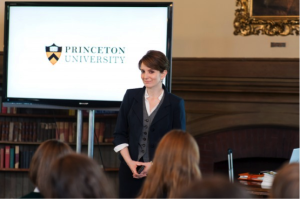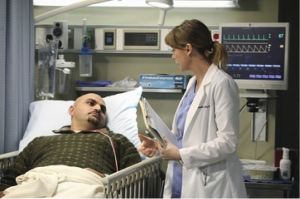Guest post by Pooja Kapadia
Unless you have been living under a rock for the last week, you would have at least heard about the latest healthcare debate: to vaccinate or to not vaccinate a child against measles? What is interesting is that in 2000, the CDC declared that measles were officially eradicated from the US. This was after decades of vaccination promotion programs from the 1960s. However, this preventable, deadly disease has again resurfaced. According to the latest count 94 people are infected in the US, in over 8 states. This recent spread serves to remind us of the unintentional consequences of prolonged exposure to technology.
Technology has been touted for years as being the reason for new treatments and improvements in medicine. In fact, it is technology that enabled measles to be eradicated in the US. Before the creation of this vaccine, the CDC estimates that around 4 million Americans suffered from measles each year, leading to 500 deaths per year. With this vaccine, Americans recently lived in a world where the disease was but a distant memory, with most physicians with never having to treat, much less deal with the disease. Other infectious diseases that also threatened infant and children lives, such as whopping cough and polio have also become less common due to advancements in medical technology.
These medical advances seemed to have jaded us to the fact that early childhood and infancy are dangerous times. We take for granted the importance that vaccinations have in not only improving, but also in saving lives. Melinda Gates gave a beautiful statement on this, stating, “ Women in the developing world know the power of [vaccines]. They will walk 10 kilometers in the heat with their child and line up to get a vaccine, because they have seen death. [Americans have] forgotten what measles deaths look like”.
Americans have become immune to advances in medical technology. Many people now believe that “too much” medical intervention is more dangerous then doing nothing at all. These people forget that not too long ago, many children commonly died from infectious diseases. According to HRSA, “The mortality rate for children aged 1-4 years declined from 1,418.8 deaths per 100,000 population in 1907 to 28.6 in 2007”. People seem to easily ignore the impact that medical interventions (aka vaccines) had in reducing these numbers.
I am not anti-technology. I think technology has obviously created remarkable advancements in medicine. I also think it has unintentionally benefitted health care, by creating an environment where people can readily share ideas and information about health and medicine. People can now join support groups for a number of diseases, get practical advice from patients who have the same condition, and make more empowered decisions about their disease and treatment plan. However, in the last week, it as been made obvious that technology also has unintentional consequences. By creating a world where the reality of infectious diseases and mortality are often a dream, technology has, ironically, given many people a chance to reject it.


